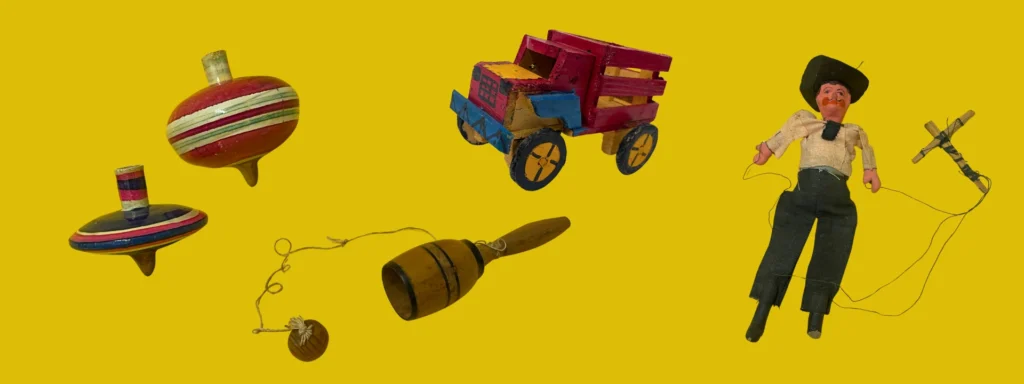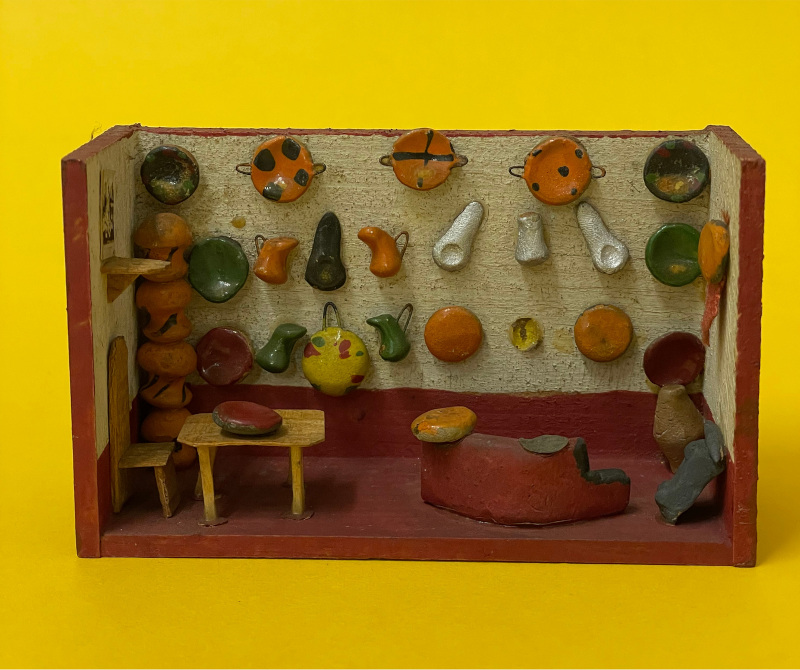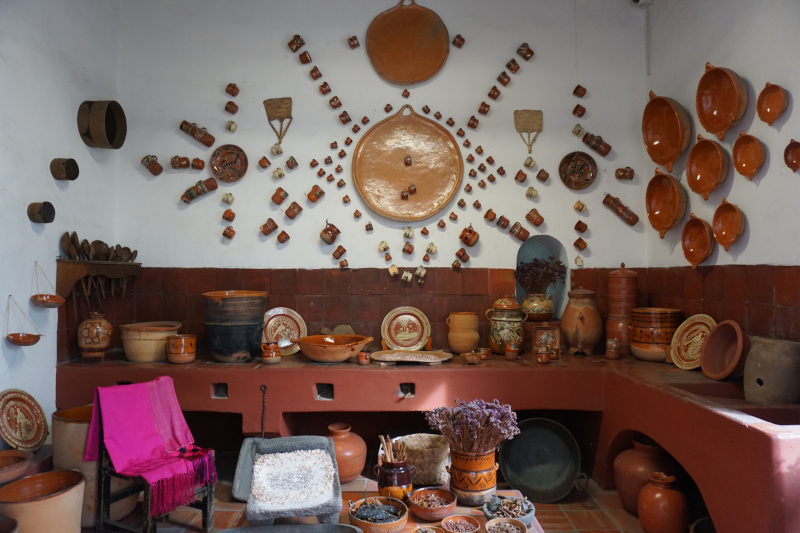The massive impact of miniature Mexican traditional toys
Juliana Arce Camiade, who has been volunteering with Pollock’s Toy Museum in Croydon, opens up a box of traditional Mexican toys and shares her personal reflections and recollections.
I moved to London from Guadalajara in Mexico just over a year ago and, as an Art History graduate, I was looking for somewhere to volunteer and put my knowledge to good use. I found Pollock’s Toy Museum and, after a visit to their Croydon location, I decided it was the place for me. Not only was I surrounded by an incredibly interesting collection of sometimes centuries-old objects, I also found 6 year-old Juliana inside a box full of Mexican toys that I was tasked with cleaning and photographing.

The toys in that box were mostly from the 1960s. But even though I was born in the late 1990s, I instantly recognised them, recalling memories of traditional Mexican toys like them. These kinds of toys have been around for a couple of centuries, with their aesthetic mostly unchanged. They are usually made of affordable materials like reclaimed wood, fired or unfired clay, papier maché, and tin. The level of detail varies depending on the skill of the artisan who made them. The types of toys seen are classics that transcend cultures and time periods: dolls, cup-and-ball toys, vehicles, spinning tops, and so on.
Traditional toys are far from the only toys available in the young nation of Mexico. In fact – while this may come as a surprise to some – modern toys mass produced by large companies from the US and Europe have been very popular in Mexico for decades. Why is it, then, that our traditional Mexican toys haven’t completely disappeared in the face of this competition?
For me, as a child growing up in one of the biggest cities in the country, traditional toys were something you would get as a special treat during a weekend outing. You can find them at cheap prices in the places you might visit with your family: at bustling markets, in areas with strong traditions of artisanry, and in picturesque small towns. Unlike most toys, they weren’t readily available everywhere. They were made of unusual materials and they had a connection to the past; my parents and grandparents would tell us how they played with the same kinds of toys when they were children.
Going back to the box at Pollock’s Toy Museum, there was one collection that I found particularly evocative of my childhood: the collection of miniatures.

Miniatures vary from tiny representations of everyday utensils and objects like mugs, brooms and chairs to minute dioramas of everyday scenes. The miniatures that mimic household items demanded a lot of imagination but, in return, you got an enhanced sense of pride, independence and realism when the toys you were playing with looked exactly like the things in the grown-up’s world. I had not realised until now how, in most cases, miniatures mimic reality in a very faithful way. It also now strikes me that the reality they depict is slowly being pushed into the past as towns turn into cities, plastic replaces pewter, and ceramics and traditions are forgotten.
As for the tiny dioramas, I have yet to find someone who is not awe-struck by the skill it takes to render these small scenes in such meticulous detail. They were not the most interactive toys to play with, as they don’t have moving parts like a doll’s house. Each scene remains in a constant state of pause; but, personally, I preferred these to the tiny food and furniture.


Real-life photo credit: Andrearodr, CC BY-SA 4.0 via Wikimedia Commons.
Perhaps the miniature dioramas’ appeal came from the extra level of imagination it took to play with them. I always preferred posing my Barbie dolls while dialogue and action took place in my head, rather than actually moving them around and speaking their lines. The miniature dioramas allowed me to imagine myself shrinking and entering into the scenes. Other times, I would just ‘press play’ in my head and imagine scenes from the characters’ lives.
Sadly, the dioramas from my childhood have not survived, but my favourites are still perfectly clear in my memory. We were in a small rural town not far from Guadalajara, surrounded by mountains and pine trees, when we first saw them. It was one of those special weekends away from the city. The first was a billiard room with two players, and the second contained two characters riding their bikes. What made them incredibly special is that the characters were not people, they were mice! I had never seen anything like them, and begged my dad to bring them home. He got the billiard room for himself and the cyclists for me.
I was not expecting the imaginative games of my childhood to reappear that day at the museum, but I am glad they did! It is a lovely thing to find pieces of us in unexpected places and to have the opportunity to reflect on our identities and shared stories. For me, remembering these toys made me compare them to the modern ones I had and I found that I don’t think either is better or worse. I used my imagination with both and enjoyed myself. I do, however, feel a bit sad that today, you’re more likely to find traditional toys used as home decoration, rather than in the hands of a child. On the bright side, this means that artisans are still making them and keeping the traditions alive. Even if the context is changing, they are still being appreciated.
Some of the traditional Mexican toys are currently on display at Pollock’s Toy Museum in Croydon, so don’t miss your chance to check them out! The museum is open every Saturday from 11.00am to 4.00pm.
